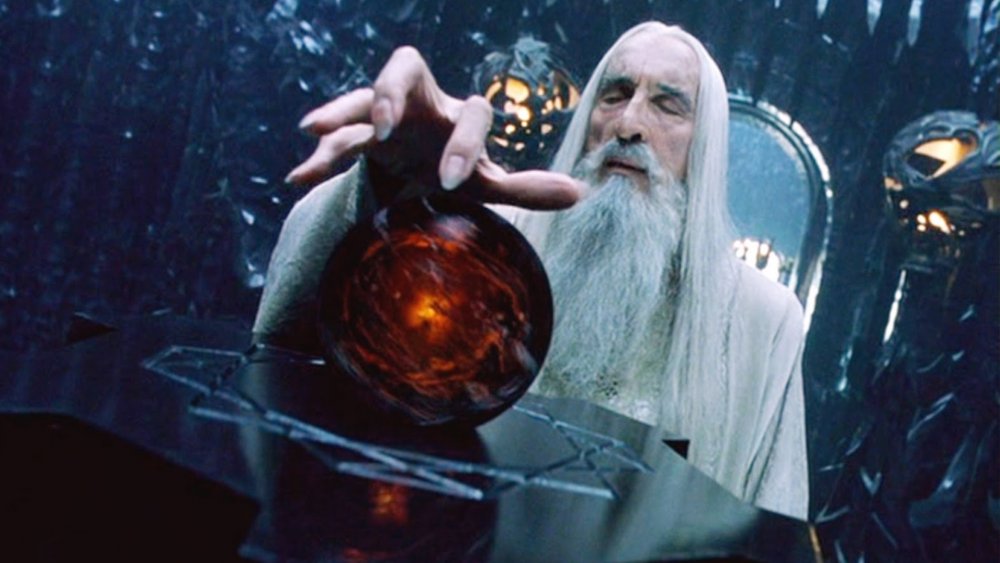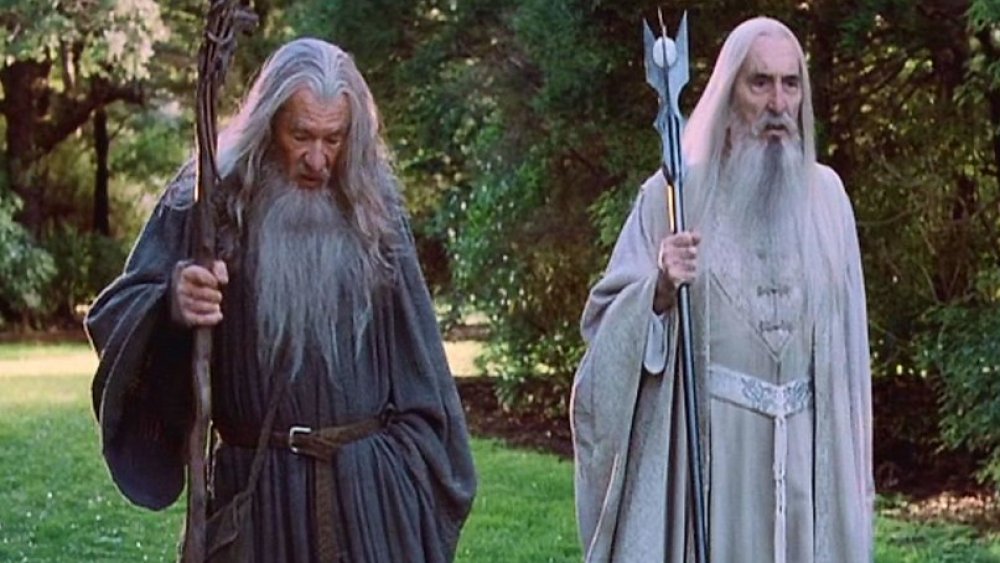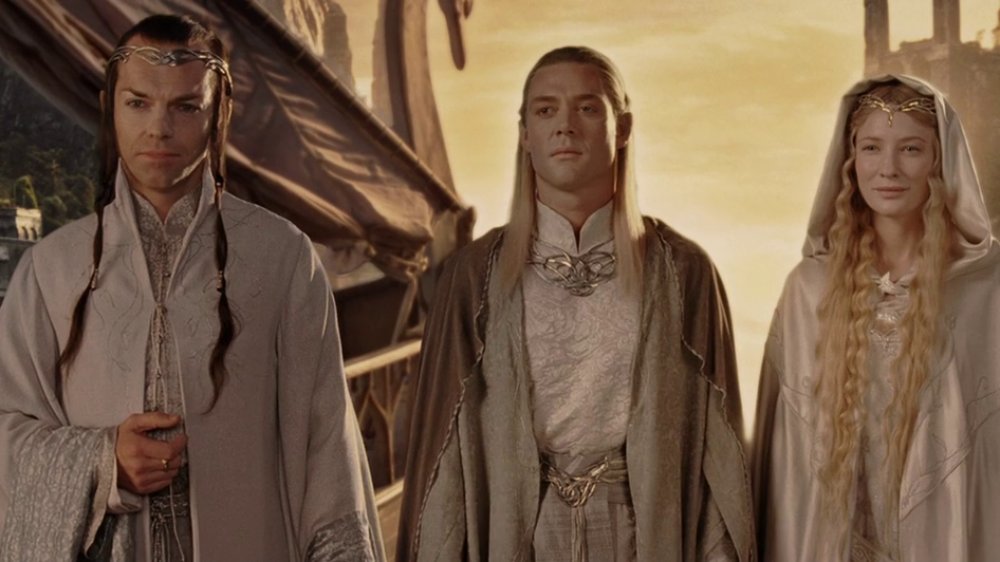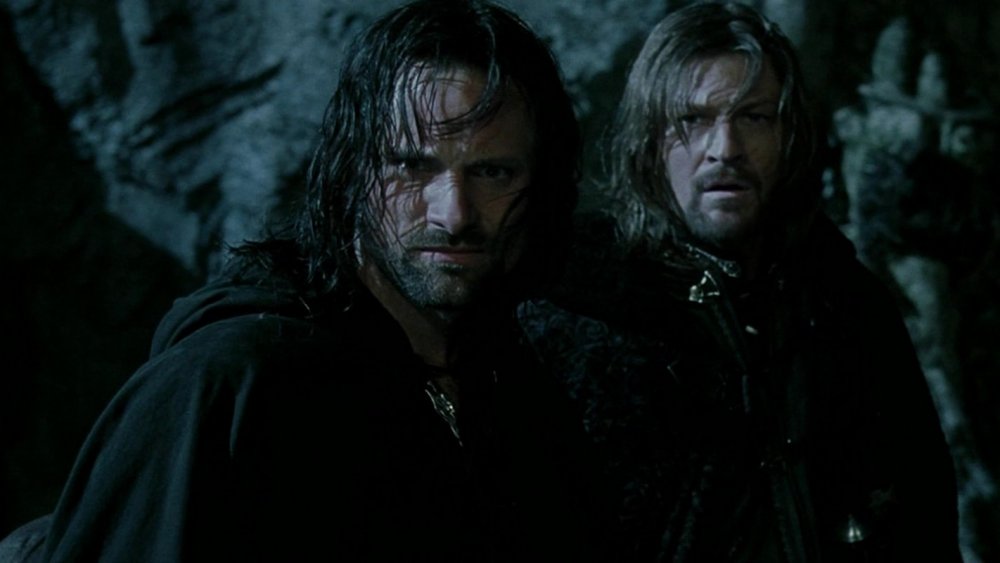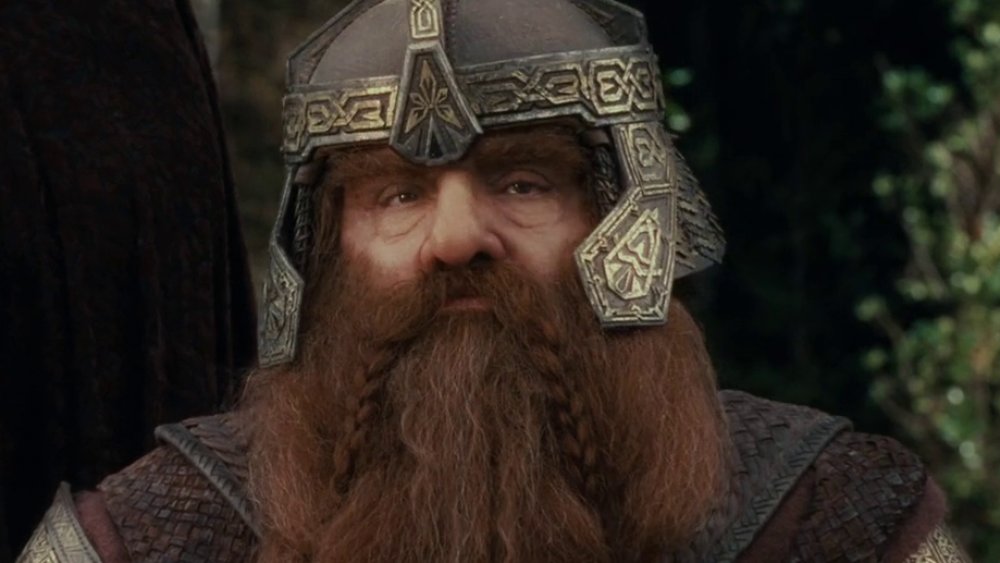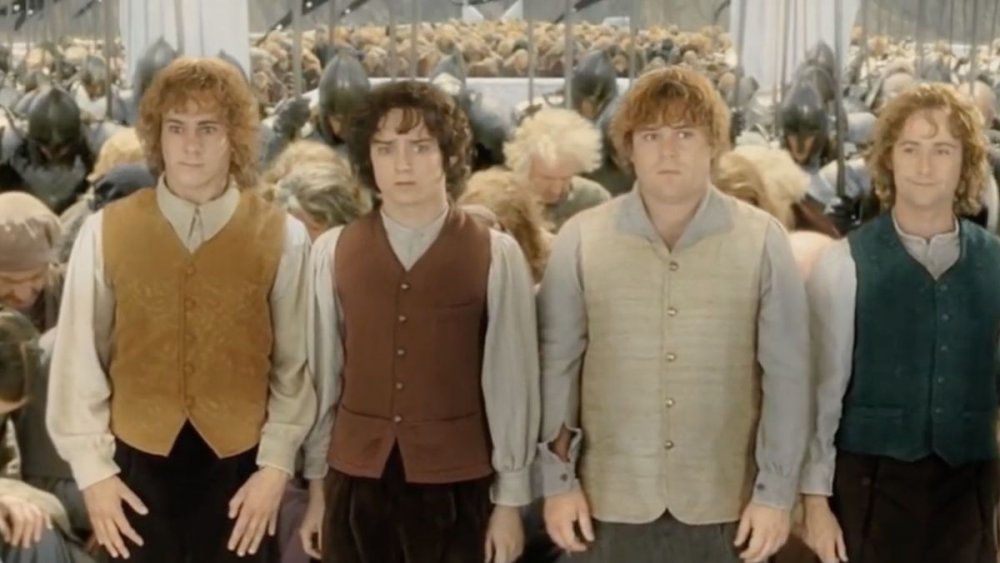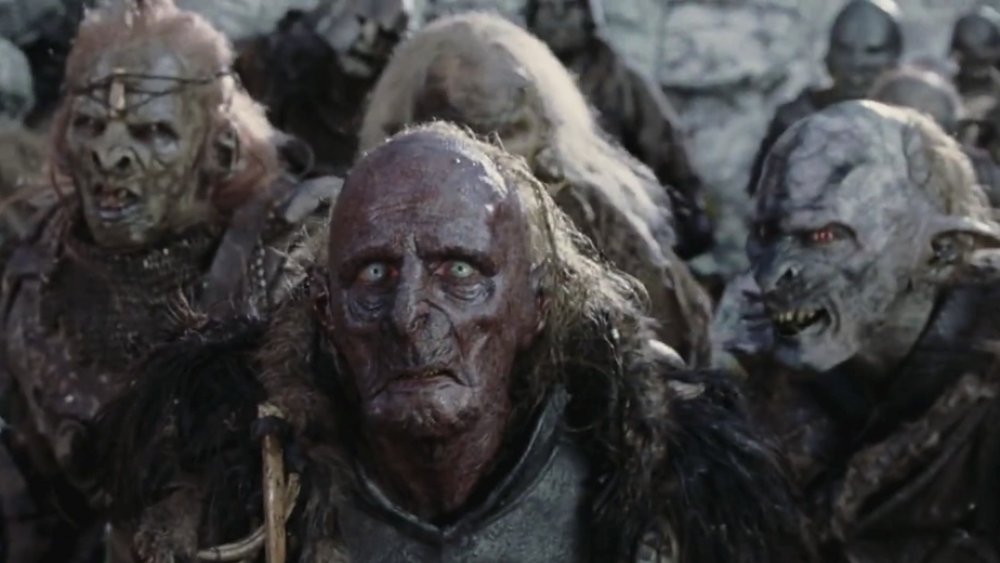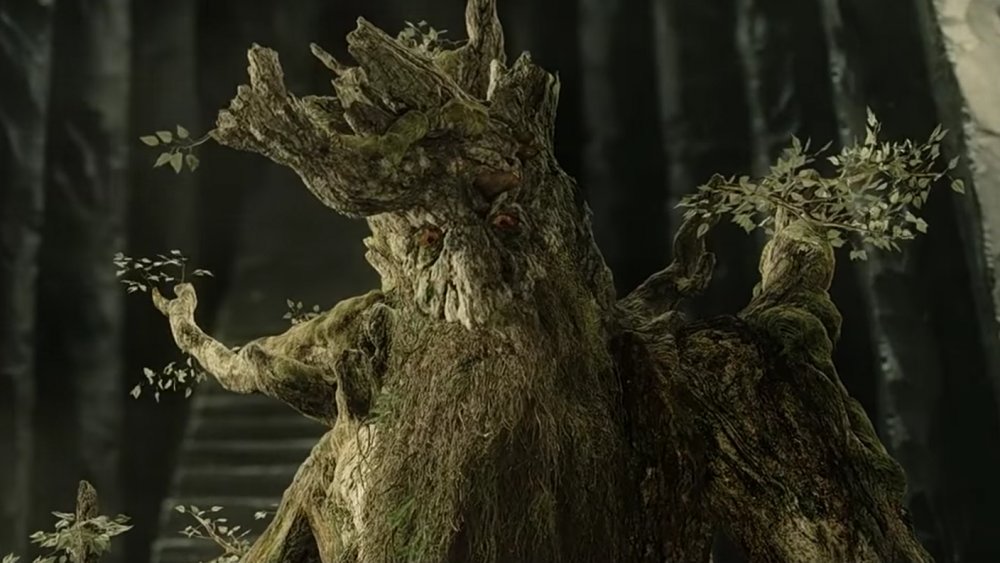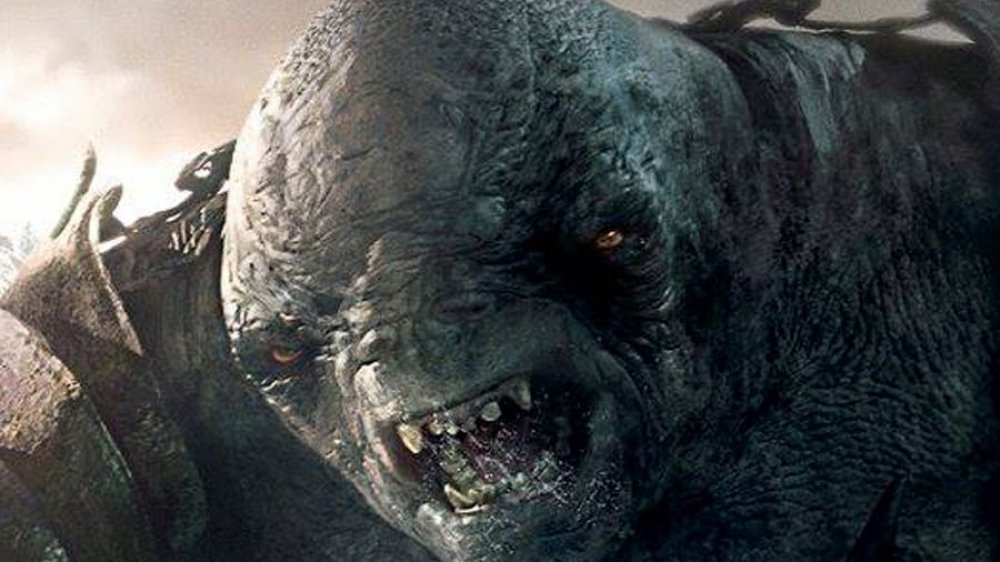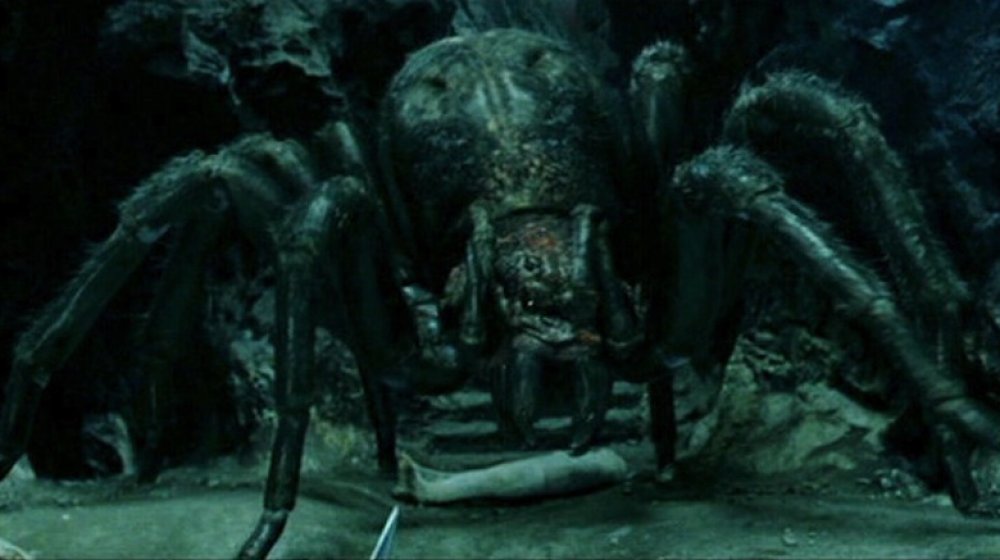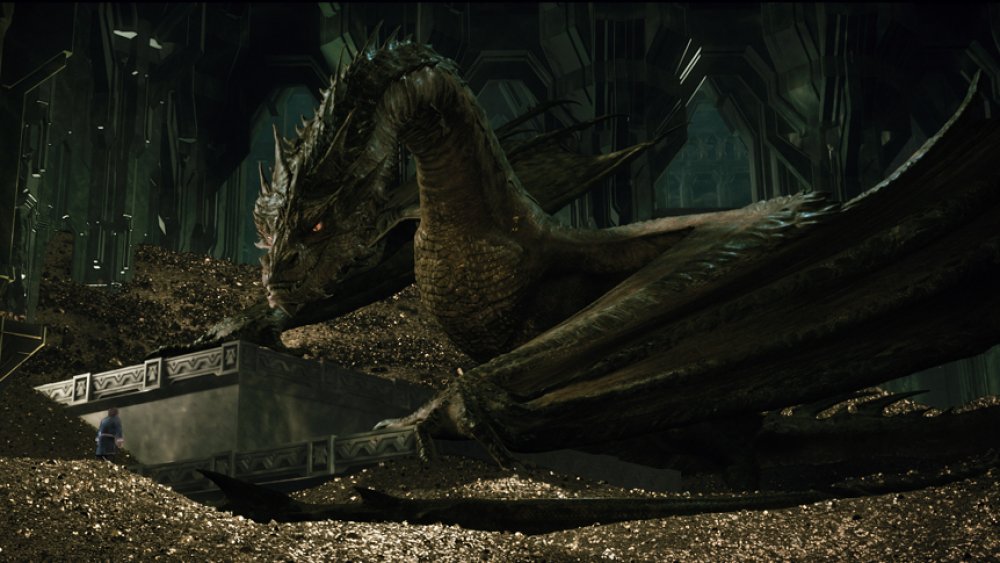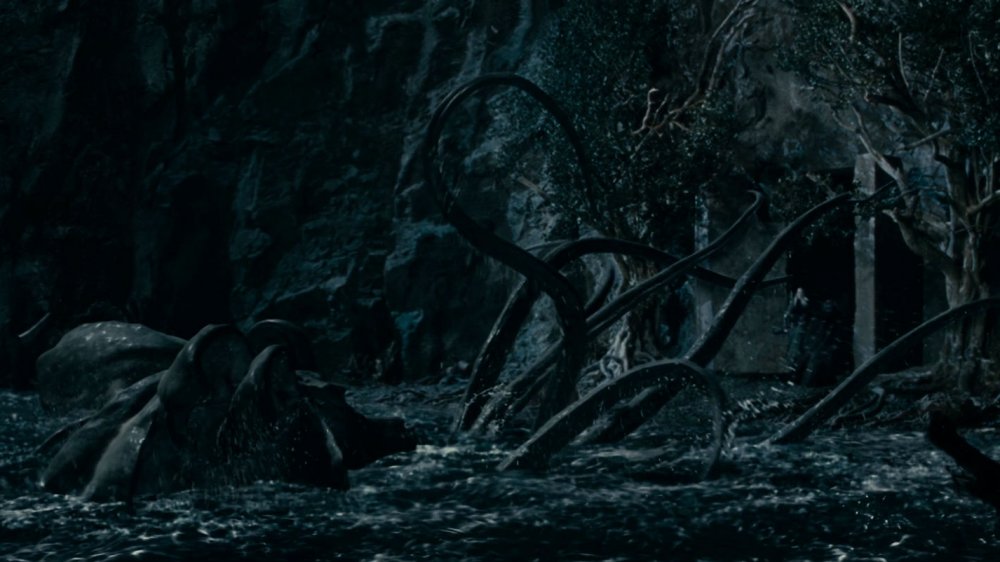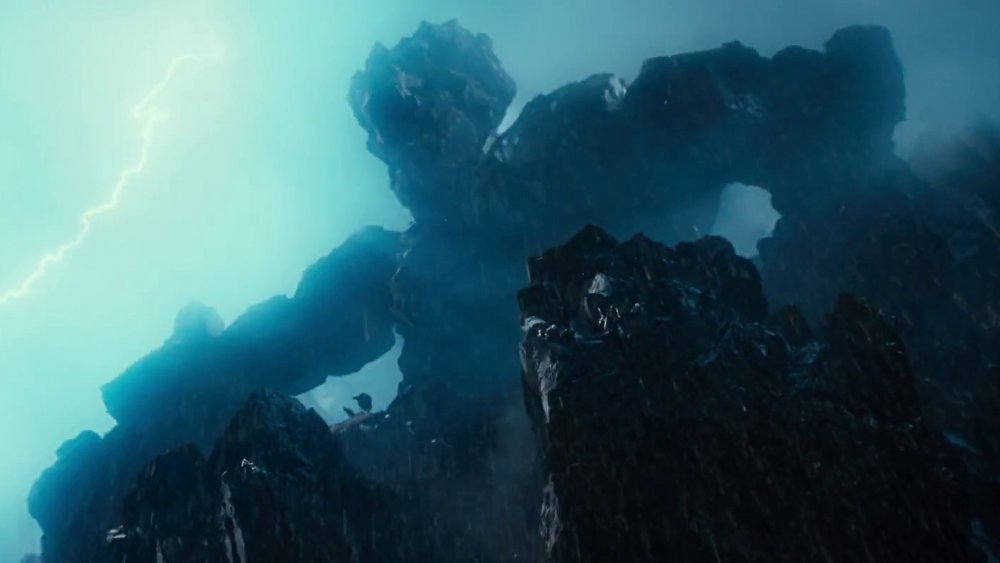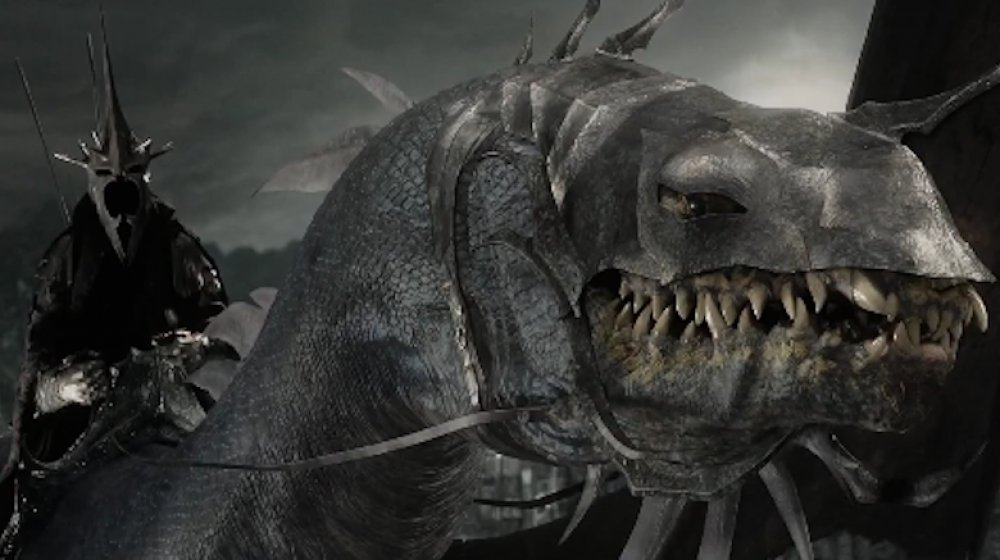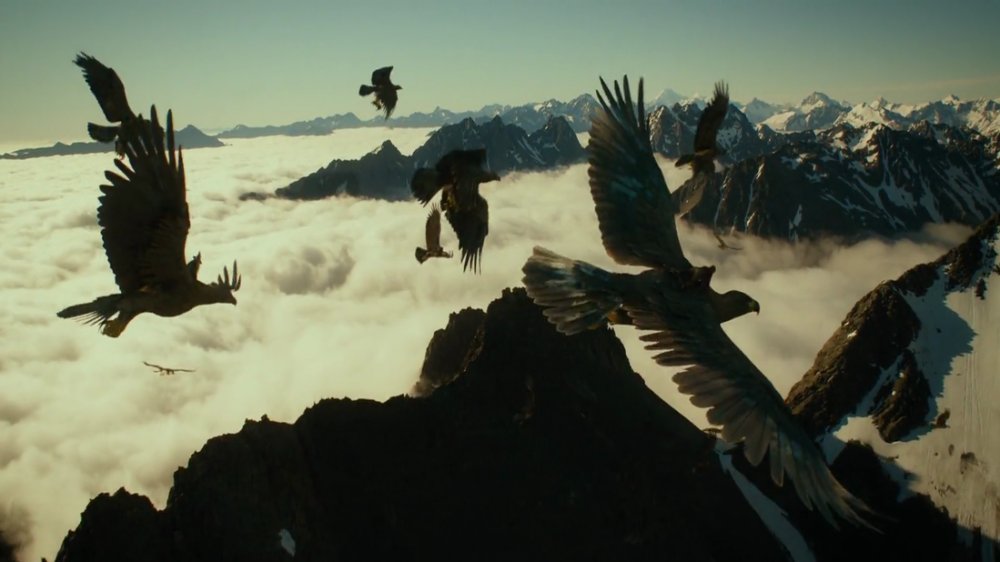The Different Beings In Lord Of The Rings Explained
J.R.R Tolkien's extensive worldbuilding in Lord of the Rings remains an incredible feat not just in the history of fantasy novels, but literature in general. The denizens of Middle-earth, even the most marginal creatures who appear only briefly, still have an entire backstory that links with others and makes Lord of the Rings an immersive experience for readers of the books and watchers of the movies alike. In fact, Tolkien's descriptions, sketches, and detailed notes are so specific he completely set up the visual adaptations to succeed onscreen, even though he never lived to actually see them. Inspired by history, mythology, philosophy, and world religions, as well as his own experiences fighting in World War I, Tolkien drew heavily from real-life inspirations in creating his fantasy world and its citizens battle between forces of light and darkness. There is one ring to rule them all, indeed, but who's "them"? Here's a breakdown of all the different beings in Lord of the Rings explained.
Maiar and Valar: Wizards
The most powerful beings in Lord of the Rings are the Maiar and Valar, also known as wizards. Descended from the magical spirits of the Valar, the majority of the wizards in Middle-earth relocated to the Undying Lands of Valinor, where they exist as pure energy that can never be destroyed. But some of the Maiar adopted human forms and decided to remain as public figures in Middle-earth to assist — or later battle — the other creatures who live there. Called Istari by the Elves, the cadre of remaining wizards was extremely small, but that does not diminish their power.
Among these wizards we find Sauron, the dark lord whose enchanted rings threatened the lives of most of Middle-earth in his search for total power. Sauron's right hand Istari was Saruman the White, a most powerful wizard for good once upon a time, but corrupted by the dark magic of Sauron. Gandalf the Grey becomes the foil of Sauron and Saruman, eventually transforming into Gandalf the White after his battle with the Balrog Durin's Bane in the Mines of Moria.
In fact, Balrogs are actually fallen Maiar who have taken on a demonic shape and related dark powers. Durin's Bane was the last known Balrog, killed by Gandalf during their epic confrontation. Wizards' powers include telepathy, telekinesis, pyromancy, spell casting, and extreme strength even though their appearance is that of wizened elderly men.
Elves
Considered the first of the Free People, those who were never swayed by the dark forces of Sauron and Morgoth and instead fought to defeat them, Elves are a mystical warrior race endowed with many of their own powers. Elves are also known as the Quendi, which means people who can speak since they were some of the first beings in Middle-earth to win the gift of speech. Elves are tall and lean, beautiful with pointed ears and many natural talents like exceptional eyesight both in light and dark, the inability to suffer physical wounds, and a very slow aging process.
In Sauron's first war for the enchanted rings, the Elves were one of the key figures who helped defeat him, and after that battle many Elves went to the foreverland in the West where their spirits will live forever. The remaining Elven dominions in Middle-earth included Rivendell, led by Elrond, and the dark-Elves abode in Lothlorien, headed by Galadriel. Dark-Elves are called such not because they are evil, but because they live deep in the forest where light doesn't reach. After the second and final defeat of Sauron in Lord of the Rings, all the Elves except for Elrond's daughter Arwen journeyed to the Utter West and their presence in Middle-earth was finished once and for all.
Men
Originally called Atani, Men also made up a huge portion of the Free People who escaped the dark power of Sauron, and Morgoth before him. Unlike Elves and wizards who are functionally immortal — even if their body dies, their magical spirit remains behind — The Gift of Men is that of pure mortality. This "gift" would quickly become considered a curse by Men who envied those beings in Middle-earth blessed with forever life, and many conflicts arose between Men and Elves. This explains much of the tension between Elven leader Elrond and the emissaries of Men Aragorn and Boromir in Fellowship of the Ring: Elves had come to severely distrust Men and their pettiness over the passing of years.
But there were in fact Men who had found a kind of immortality that so many of them craved. The Nazgul, or Ringwraiths, who do Sauron's bidding in locating the rings and terrorizing all those who stand in their way were once Men. But now they are corrupted dark spirits who are Men only in history and name, not humanity. The Black Riders on horseback also also fallen Men. On Frodo, Sam, and Gollum's journey to Mordor they also come upon the Dead Marshes and Paths of the Dead, where ghostly beings trapped in limbo under the water taunt the living to join them in that watery purgatory. These ghouls were once Men, and now occupy a shadow space.
Dwarves
Created by the ancient wizard of the Valar, Aulë the Smith, Dwarves live and work deep underground mining for metals like mithril, rock, and precious stones used for all manner of life in Middle-earth. While they are both part of the Free People, in many ways Dwarves are the polar opposite of Elves. Dwarves are short and squat, with a grizzled appearance that makes even the youngest Dwarf look decades older than their actual age. It doesn't help that they all have long beards, including the female Dwarves, which are a huge point of pride among the community. Dwarves are exceptionally strong and wield battle axes as large as themselves with no complaint. While Dwarves are not immortal, they do live for hundreds of years, unlike mortal Men and the immortal Elves.
Because a Dwarf ancestor Durin III received one of Sauron's rings for safekeeping, his cohort of Dwarves were slowly corrupted by the ring's power and they became overly greedy for jewels and precious metals. As they overworked Khazad-dum, later called the Mines of Moria, they released a hidden Balrog who proceeded to kill most of Durin's kin. Those who survived fled to the north and resettled, but their numbers were greatly diminished.
Hobbits
Even though Hobbits are central figures in Tolkien's Lord of the Rings universe, there is surprisingly little known about their proper origins, unlike their Free People counterparts in Men, Elves, and Dwarves. Hobbits have no powers other than a fierce sense of loyalty and forthright determination. They are short of stature with pointed ears, and they have such tough skin on their overly large feet for their size that they require no shoes, even when walking in rain, or on snow or mountains. These original foodies and fans of second breakfast mostly live in the pastoral wonderland of the Shire, where their Hobbit-holes are built into the landscape so naturally you almost wouldn't even know there are homes there.
It was because of the gentle Hobbit personality that one in particular, Frodo Baggins, would be entrusted with carrying and ultimately destroying the One Ring, even though this experience would take an enormous toll on him as did possessing the ring have on his ancestor Bilbo. While Gollum was the only one of his kind, he was once technically a Hobbit who went by the name of Smeagol until his many years with the ring turned him into a creature unrecognizable by Hobbit standards.
Orcs and Uruk-hai
Before Sauron there was Morgoth, a dark wizard with designs to rule over Middle-earth with a cruel hand. He molded an entire race of slaves in Orcs and Uruk-hai, vicious creatures distantly related to Elves who served as army forces to do the bidding first of Morgoth and later unearthed once more by Sauron. Orcs have reptilian faces, sharp as nails teeth, and claws they don't hesitate to use when necessary or not. They range in height, some only Hobbit-sized and others as tall as Men and Elves. Orcs cannot stand daylight, but their larger cousins the Uruk-hai are able to see in daylight without any trouble, making this army of monsters quite a force to be reckoned with. These grotesque creatures are as crafty as they are ugly, with the ability to fashion all kinds of horrific tools for torture, domination, and the ultimate subjugation of others per their Dark Lord's orders. J.R.R. Tolkien used the term goblin synonymously with orc.
Ents
Called the Onodrim by the Elves, Ents were once humanoid caretakers of the woods, protecting the forests from environmental threats like Orcs and even Dwarves who would cut down the trees for fashioning their weapons. Eventually the Ents took on the physical form of the trees they were watching after, and are one of the only groups in Middle-Earth almost as old as the Wizard spirits. At first, Ents did not have the gift of speech. But after a time of listening to the Elves, they learned how to speak, even though they continue to do so v-e-r-y s-l-o-w-l-y.
By the time of Lord of the Rings, there were two known forms of their language: Old Entish and New Entish. The old version was made purely of various long tones, where New Entish included actual words from Elvish given an Ent spin. Sadly, after all the Entwives were killed during the many wars fought over Middle-earth, the Ents are subsequently unable to create new members of their community. If Middle-earth had an endangered beings list, Ents would be right at the top.
Trolls and Ogres
The Dark Lord Morgoth created more disturbing creatures for his protracted battles against forces of good which also included Trolls and Ogres. Made as an open mockery of Ents, Trolls are huge, hulking, humanoid creatures with almost impenetrable thick skin and melty bulbous faces. They are exceedingly strong and can wield huge weapons with a crushing force. But unfortunately, they cannot withstand sunlight; exposure makes them turn into stone permanently.
As time went by, a new breed of Troll called the Olog-hai were born and while they looked very much like standard Trolls, this breed could go out into both night and daylight making them an even bigger threat in battle. Not all Trolls have the ability of speech, but all of them are not particularly clever and are better suited for taking orders.
While Ogres only make a brief appearance in the Hobbit book, and it suggests they are a possible mythical creature from Middle-earth history, the version we see in the Battle of Five Armies film could be inspired by Half-Trolls, who are a smaller and faster version of standard Trolls with a slightly different appearance.
The Spiders
The Ungoliant was the first of the huge, venomous, light-eating spiders, but her actual origins are unclear other than being related to an ancient race of large, sentient eight-legged beasts with segmented bodies. She was not created by Morgoth like Orcs and Trolls, but did work closely with that Dark Lord in his campaign to take over Middle-earth. The Spiders are also referred to as Children of the Ungolient, and Lord of the Rings books seem to suggest The Ungoliant may have mated with other large spiders to create this new species.
The Spiders prefer dark places where evil reigns and any time light enters they consume it to create more darkness, both physically and metaphorically. They do speak, but a language only other Spiders can understand. Eventually the Ungoliant's descendent Shelob would encounter Sam and Frodo on their journey to Mordor, first incapacitating Frodo with her venom and later being killed by Sam using Frodo's Mithril blade Sting. The Spiders mainly live in the tunnels of Mordor as well as the dark forest of Mirkwood.
Dragons
Without the Dark Lord Morgoth's menagerie of monsters, we wouldn't have the incredible reptilian beasts known as Dragons that play a variety of roles in Lord of the Rings and beyond, but always unfortunately on the side of evil. From the first Dragon Glaurung the Great Worm to vicious and greedy Smaug hoarding gold and jewels for his own pleasure, Dragons played a huge part in the history of Middle-earth up until their supposed extinction with the death of Smaug. Dragons had the gift of speech as well, although they chose to use the Common Tongue instead of the Elven-based Middle-earth languages.
While most dragons had wings and could breathe fire, there were some that didn't have flight like Scatha the Worm and others that could only breathe smoke, not actual flames. Dragons were a spiteful bunch. As much as they loved finding and keeping treasure away from others who might need it more, they received far more joy in the actual taking away of precious things from those they rightfully belonged to. Dragons aged slowly and were notoriously difficult to kill because of the virtually impenetrable scales covering their bodies.
Watcher in the Water
While the Watcher in the Water only appears once in Lord of the Rings, it represents a point of no return for the Fellowship of the Ring. In Tolkien's book, the creature is described as living in a pool of stagnant water and that it has many tentacles. Peter Jackson's adaptation for the screen is heavily inspired by H.P. Lovecraft's Cthulhu mythos as the monster emerges in great detail with a dozen tentacles and an octopus-like face with beady eyes.
After the creature is disturbed while Gandalf and Frodo are trying to solve the riddle to open the mine door, Frodo is almost killed and the group is subsequently rushed down a treacherous path through the Mines of Moria without any time to consider their next steps. The origins of the Watcher remain an enigma, with Gandalf only noting that the thing is as old as Orcs and fueled by the same dark power. In the film adaptation, Legolas shoots the monster in the eye with one of his Elven arrows and we never find out if the creature lived or died thence forward.
Giants
The race of rock-looking beings known as Giants also have an enigmatic creation story in Lord of the Rings. Also called Stone-Giants in The Hobbit, their biggest appearance takes place in that story when Bilbo Baggins sees them having a rock fight in the middle of a huge thunderstorm. "Bilbo saw that across the valley the stone-giants were out, and were hurling rocks at one another for a game, and catching them, and tossing them down into the darkness where they smashed among the trees far below, or splintered into little bits with a bang ... they could hear the giants guffawing and shouting all over the mountainsides." While they aren't properly described in the book, Peter Jackson models the physical beings after their moniker Stone-Giant and we see them looking like walking rock faces that also appear to speak. Giants hail exclusively from the Misty Mountains and are such an ancient race they are almost mythological creatures even within the history of Middle-earth.
Fellbeasts
The Nazghul's winged dragon-esque transportation is one of the few beings in Lord of the Rings whose name is assumed, not actually given. Tolkien refers to the monsters as "fell" creatures, a word from Middle English that signifies a dark, vicious, and malevolent thing, and it was Tolkien's readers who coined the phrase "Fellbeast" to refer to them. Their origins are also unclear, but there is a suggestion that it was Sauron who created or raised the creatures from a corresponding dark place and empowered them to be the chariots for his cadre of Nazgul as they searched for the One Ring. Unlike Dragons, Fellbeasts do not have the power of speech or breathing fire, but they do have huge clawed hands that they often employ for their Nazgul masters' bidding. Sam and Frodo have numerous near-death encounters with the dreaded Fellbeasts, who are as demonic and focused as their ghostly riders in the service of the Dark Lord Sauron.
Large mammals of Middle-earth
Through Middle-earth's history, the Great Eagles were an emissary for the forces of light through the age of Dark Lord Morgoth and Sauron. They have the ability to see through all things and from great heights, except into the darkest reaches of Dark Lord territory. The Great Eagles kept an eye on Sauron's mining of Orcs and Uruk-hai, as well as swooping in to rescue Dwarves, Hobbits, and Wizards alike in Lord of the Rings.
Even though the Mumakil, or Oliphaunts, had no concrete loyalty to either the dark or light forces, they were mostly utilized by the Dark Lords on the battlefield. The Mumakil are reminiscent of prehistoric mammoths, with a tough hide, huge stature, and enormous tusks that can be manipulated as weapons. Sauron's armies constructed war towers on their backs from where they could launch weapons and see from a higher vantage point. The Mumakil's weakness was their eyes, a fact exploited by those who fought against them.
Tolkien's Werewolves were not men who turned into wolves on full moon nights, but rather an oversized mutated wolf created by the Dark Lord Morgoth using the spirits of fallen Maiar and later utilized by Sauron. They had an innate intelligence and ability to speak, as well as reason if need be.
Wargs are said to have descended from the Werewolves, and in Lord of the Rings serve Orcs as their steeds for travel as well as battle. Unlike other references to Wargs that imply they are shapeshifters or able to be mentally controlled by other beings, Tolkien's version is simply a large, vicious wolf.
